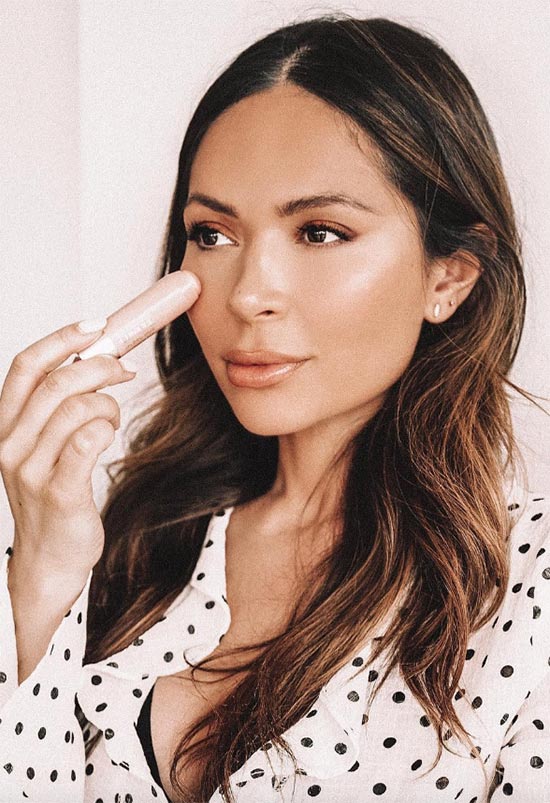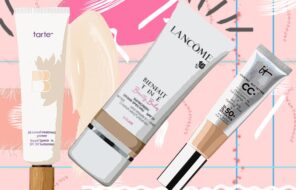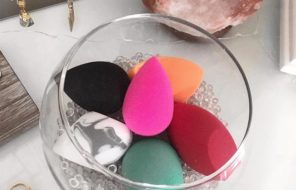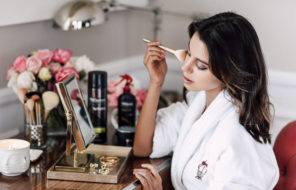Foundation stick gives a speedy makeup application, and it can easily double as a concealer or a contour stick. No matter your skin type, tone, or personal preferences, I assure you that there is a foundation stick out there that will make your morning routine and on-the-go touch-ups a breeze.
We explain exactly what foundation sticks are, what makes them so great, and how they differ from liquid and cream foundations. We’ll also give a step-by-step guide on how to apply foundation sticks. To cap things off, we have a few extra tips and tricks to make this incredible multi-use foundation even more useful!
In this article:
- What Are Stick Foundations?
- Stick Foundation Benefits
- Liquid vs. Stick Foundation
- How to Apply Stick Foundation
- Other Foundation Stick Tips to Know
What Are Stick Foundations?
Imagine an extra large tube of lipstick, but instead of being filled with a reddish cream, foundation stick is filled with a thick cream foundation. That is essentially what foundation sticks are – cream foundations in a tube.
These foundations are quick to apply, since you just have to swipe them on and blend. Their shape makes them super easy to carry in a bag and use throughout the day for touch-ups.
You do not have to worry about any spills or mess! They tend to have a higher coverage than most liquid foundations, and their thicker formula makes them an excellent two-in-one foundation and concealer.
Stick Foundation Benefits
- Foundation sticks are easy to carry in the purse and apply on the go.
- Higher coverage and thick texture means that stick foundation can double as concealer.
- A darker shade of stick foundation makes for excellent and easy cream contour!
- A lighter shade of stick foundation is perfect for highlighting, especially if you prefer a matte or subtle highlight.
- The application process for stick foundations is clean and easy, as you just swipe them on and then blend with your tool of choice.
- A foundation stick cannot spill or make a mess, so it’s perfect for anyone a little clumsy!
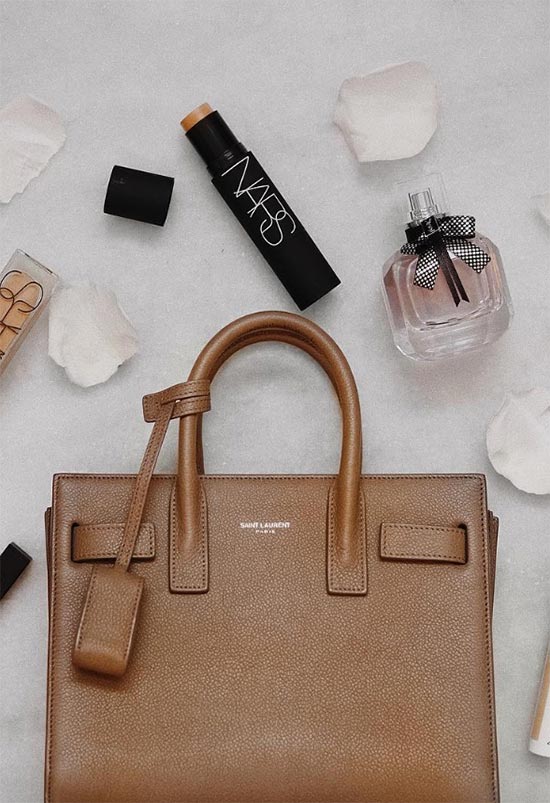
Liquid vs. Stick Foundation
Liquid foundation is the most popular kind of foundation. This is not surprising, because liquid foundations can come in a very wide range of finishes and coverages, which means that they can work for anyone. They are also very easy to formulate – all a company has to do is make a colored liquid and put it in a bottle.
Stick foundations, however, are a more specific product. A stick foundation has a thicker, more waxier texture, and it requires a bit more work to prepare, since it has to be poured into a mold and then placed in a tube where it rolls up.
Because of this stick foundations hold less potential to make a mess and they are much quicker and easier to apply than liquid foundations. For the most part, stick foundations tend to have a higher coverage although some sheer and medium-coverage ones also exist, and they tend to leave the skin with a velvet or demi-matte finish.
Cream foundations are very similar to stick foundations when it comes to feel and coverage, but the big difference is the container they come in. Normally cream foundations come in a jar or a compact, which is also more portable than a bottle of liquid foundation. However, a stick foundation is applied straight from the tube to the skin, while cream foundations require some sort of sponge or brush to go on.
If you prefer something quick and easy with good coverage, definitely consider switching over from your liquid foundation to a foundation stick!
How to Apply Stick Foundation
You can use your foundation stick multiple ways – either as a foundation or for highlighing and contouring. These are the steps to stick to when using a foundation stick for both purposes:
Stick Foundation as Foundation
- Start off by making sure your skin is ready for foundation, by cleansing and moisturizing it. If you’re going out in the daytime, apply an SPF product as well.
- Applying a primer is a great optional step for cushioning your skin from foundation, increasing its longevity, and blurring imperfections below it.
- Roll up your stick foundation. Apply it to your skin, starting with the areas where you need the most coverage. For a simple, all-over base, apply it in stripes or dots to your cheeks, jawline, chin, nose, and forehead.
- With your fingers, a stiff foundation brush, or a damp makeup sponge, blend the foundation out into your skin. Use downward, circular motions for that perfect, seamless blend.
- If necessary, build up extra coverage with foundation by dotting it over pimples or areas with redness.
- To add a bit of coverage under the eyes, swipe a bit of foundation over your ring finger or a concealer brush, and apply to the under-eye area with a gentle stippling motion.
- If you need even more coverage anywhere, apply a dedicated concealer as you normally would.
- If you use any other cream makeup products like blush, contour, or highlighter, apply them next.
- Set your foundation into place with a translucent powder. To avoid disrupting the makeup, use a large kabuki brush, and apply the powder in a stippling motion.
- Finish off with additional powder products like blush or bronzer, as well as eye and lip makeup, and you’re good to go!
Stick Foundations for Contour and Highlight
- Once you’ve applied your foundation, either as outlined above or in whichever way you normally would apply a liquid or cream foundation, you can use stick foundations to achieve quick and easy cream highlight and contour.
- Choose one stick foundation that is 3-4 shades darker than your skin tone for contouring, and another stick foundation that is 2-3 shades lighter than your skin tone for highlighting.
- For contouring, swipe a thin line of the darker foundation stick just below your cheekbone. Start the line right next to the center of the ear, and pull it down about an inch below where the apple of your cheek starts.
- You can also contour with a couple of lines or dots at your temples, one line along the perimeter of the forehead, a line along your jawline, small lines or dots at the sides of your nose, and a couple swipes right below the chin.
- To blend out the contour, use the pointy end of a beauty blender or a small stiff foundation brush. Use small, circular motions to blend larger areas like below the cheek, the temples, jawline, and forehead. For the nose, use a more careful stippling/ blending motion that pulls the contour down and away from the bridge of the nose.
- For highlighting you can use either lines of the brighter shades of stick foundation or you can dot it – it is totally up to you!
- Apply the lighter foundation stick to the high point of your cheek bones, down the bridge of your nose, above your cupid’s bow, to the center of the forehead, and right below where you applied your cheek contour.
- With a clean brush or beauty blender, use a gentle tapping motion to blend out your highlight while still maintaining its intensity.
- Once you’re finished, touch up your foundation and concealer, and then use a translucent powder to set everything into place.
- If you would like to increase the intensity of your contour and highlight, you can double it up with a powder contour and shimmery highlight.
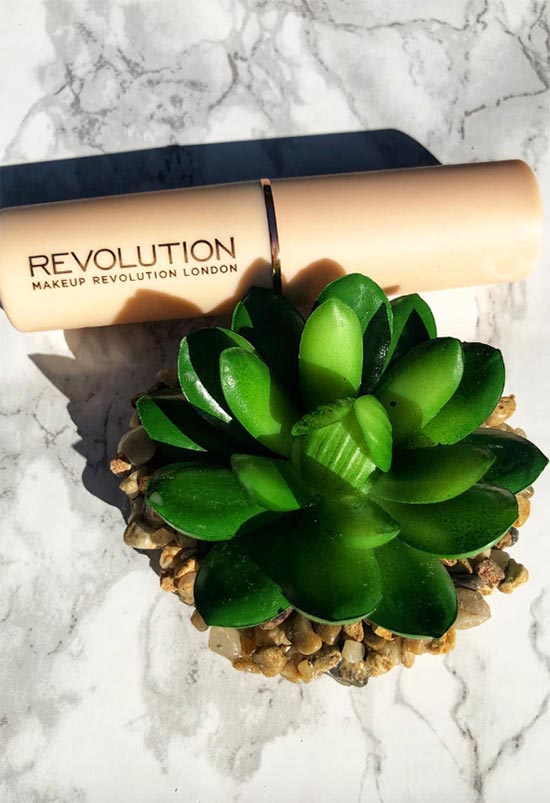
Other Foundation Stick Tips to Know
- Foundation sticks do a great job doubling as concealers, but they are a little too big to apply straight to those pesky blemishes or below the eyes. Rub the tip of a concealer brush over your foundation stick to collect product, and then use the concealer brush to apply that bit of foundation wherever it may need to go.
- When applying stick foundation, be careful not to overdo it. By apply it in a few dots or stripes over the face and then blending you are guaranteed a flawless application that will not be cakey.
- When it comes to using stick foundations for highlight and contour, remember that a little goes a long way, so use a smaller amount of product and thinner lines than you would if you were using a powder contour or highlight.
- Do not neglect your skin or skip the moisturizer! Stick foundation, like other high-coverage foundations, is likelier to catch on dry patches if the skin is dehydrated.
- Not all stick foundations need to be set with a translucent powder, so pay attention to your skin and decide for yourself if you think powdering is necessary.
- In a pinch, stick foundation can act as a decent base for eyeshadows. Swipe it over your eye, blend it, and place the eyeshadow on top and you will enjoy an eye makeup look that will not crease or budge for quite a while.
- Use your foundation stick to sharpen the outer line of your eyeshadow – simply swipe it up from eye to temple, below where the wing of your eyeliner should go.
Photos via @marianna_hewitt, Instagram

